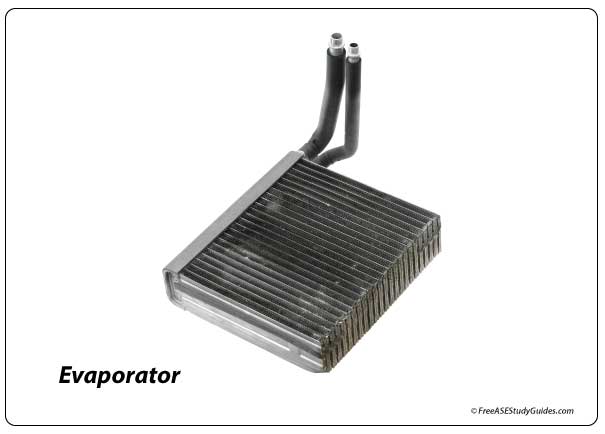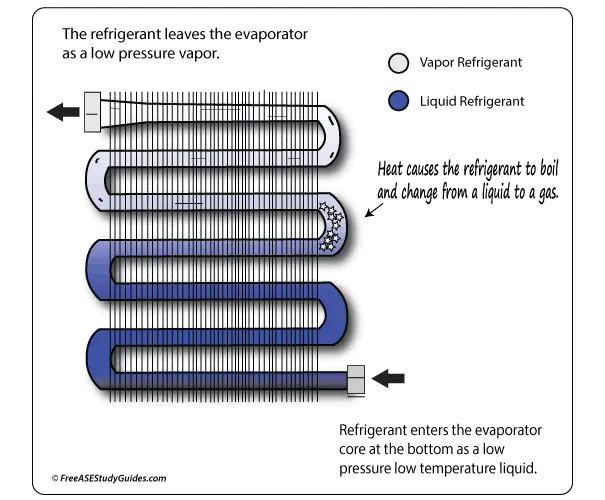A/C Evaporator Core

The evaporator removes heat and humidity from the passenger's compartment. Encased in a plastic housing along with the heater core, it's a heat exchanger consisting of aluminum tubes and fins. A metering device controls the evaporator's temperature by controlling the liquid refrigerant's flow into the core. A decrease in flow and pressure from the metering device causes a decrease in temperature in the evaporator core.

Refrigerant enters the evaporator from the bottom inlet tube as a low-pressure liquid. As it passes through the core and toward the top, it absorbs heat from the passenger's compartment. Warm air from the passenger compartment cools as it passes through the evaporator's fins and tubes.
Refrigerant has a low boiling point, and as it absorbs heat from the cabin, it changes its state from a liquid to a vapor. This heat exchange causes the refrigerant to boil and expand. This expansion phase is why the outlet tube is larger than the inlet tube.